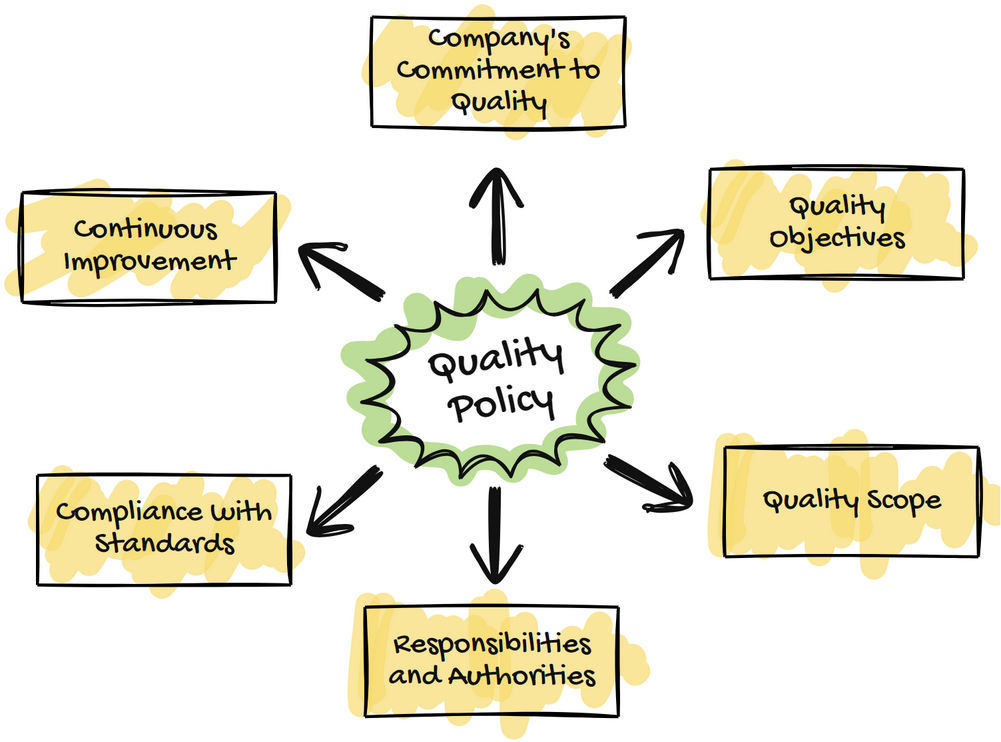What is a Policy?
In business and organizational management, a policy is a guiding principle or protocol designed to guide decisions and actions toward a specific goal. Policies are formalized rules or guidelines that an organization adopts to ensure consistency, compliance, and efficiency in its operations. They serve as a roadmap for management and employees, outlining expected behaviors and procedures and providing a framework for decision-making and daily activities.
What is a Quality Policy?
A quality policy is a subset of these organizational policies focused on the quality aspect of a company’s operations and outputs. It’s a statement or document that clearly defines a company’s commitment to quality in its products or services. The quality policy is the cornerstone of a company’s quality management system, setting the tone and direction for all quality-related activities.
Why is a Quality Policy Needed?
The necessity of a quality policy arises from its role in establishing a uniform understanding of quality within the organization. It acts as a central reference point for all employees, from leadership to frontline staff, ensuring everyone works towards the same quality objectives. This policy helps in:
- Aligning with Customer Expectations: Setting quality benchmarks ensures that the products or services meet or exceed customer expectations, thus enhancing customer satisfaction and loyalty.
- Regulatory Compliance: Many industries have regulatory requirements regarding quality. A quality policy helps adhere to these standards, avoid legal issues, and maintain a good reputation.
- Consistency in Quality: It ensures consistency in the quality of products or services, irrespective of the scale of operations or the company’s geographical spread.
- Continuous Improvement: A well-crafted quality policy promotes a culture of continuous improvement, driving innovation and keeping the company competitive.
Main Points in a Quality Policy
A typical quality policy will cover the following key areas:
- Company’s Commitment to Quality: It starts with a statement of commitment from the top management, underscoring its commitment to maintaining high quality in its offerings.
- Quality Objectives: These are specific, measurable goals the company aims to achieve in quality. They might include targets like reducing defect rates, improving customer satisfaction scores, or ensuring timely delivery.
- Scope of the Policy: This part defines who is covered by the policy, usually including all employees and departments within the organization.
- Responsibilities and Authorities: It clarifies the roles and responsibilities of different team members in upholding the quality standards, ensuring everyone knows their part in the quality management system.
- Compliance with Standards: The policy often references industry standards or regulatory requirements that the company commits to comply with.
- Continuous Review and Improvement: A statement on how the policy will be reviewed and updated to adapt to changing business environments or customer needs.

In conclusion, a quality policy is a vital component of an organization’s overall strategy, embedding a commitment to excellence in every aspect of its operations. It’s not just a set of rules; it reflects the company’s ethos and a blueprint for sustainable success. By prioritizing quality, organizations can ensure long-term customer satisfaction and continuous growth in an ever-evolving business landscape.

